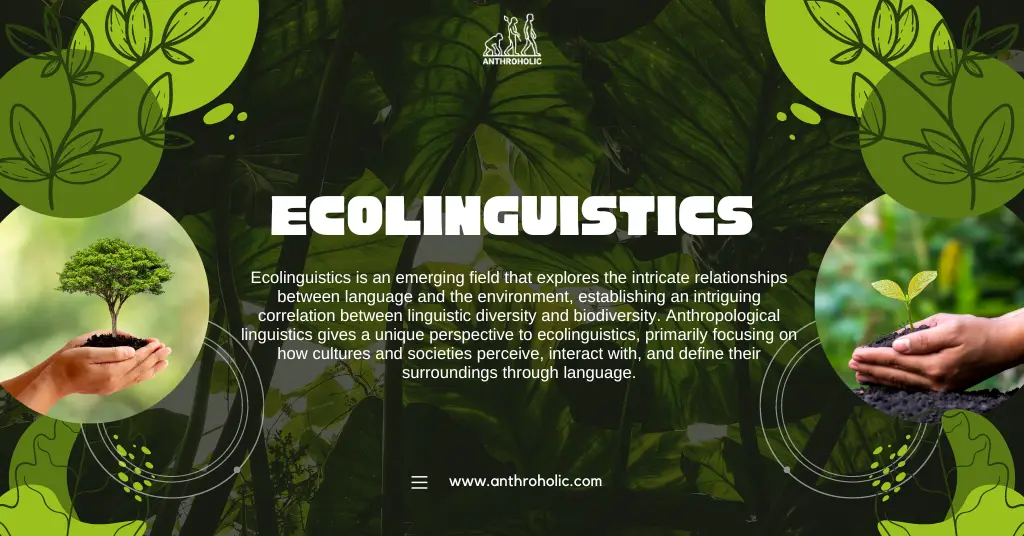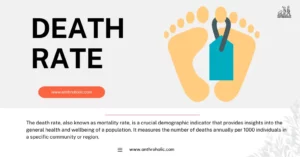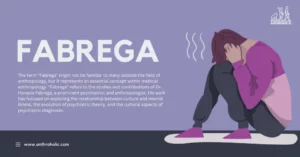AI Answer Evaluation Platform Live Now. Try Free Answer Evaluation Now
Ecolinguistics
Ecolinguistics is an emerging field that explores the intricate relationships between language and the environment, establishing an intriguing correlation between linguistic diversity and biodiversity [1]. Anthropological linguistics gives a unique perspective to ecolinguistics, primarily focusing on how cultures and societies perceive, interact with, and define their surroundings through language.

The Scope of Ecolinguistics
Drawing from the realms of anthropology, linguistics, and ecology, ecolinguistics brings an interdisciplinary perspective to understanding the relationship between language and the environment. The primary areas of ecolinguistics study involve:
- Linguistic Ecology: Studying languages as they exist in their ecological contexts, including their interactions and coexistence [2].
- Ecological Discourses: Investigating how language can influence, and is influenced by, environmental ideologies and debates [3].
- Endangered Languages and Biodiversity: Studying the links between linguistic diversity and biodiversity, primarily in regions with a high concentration of indigenous languages [4].
Linguistic Ecology: A Deep Dive
Linguistic ecology, a subset of ecolinguistics, concerns the environment in which languages exist, develop, and fade away. An essential concept within this area is the linguistic landscape, a term used to define the visible language usage in a specific area.
| Linguistic Landscape Components | Description |
|---|---|
| Public Signage | Language used on public and commercial signs. |
| Topographical Names | Language used in names of places, rivers, mountains etc. |
| Cultural Monuments | Language inscribed on historical and cultural landmarks. |
| Advertisements | Language used in printed and digital media adverts. |
Through such components, linguistic ecology helps uncover the cultural, social, and historical layers of a geographical area.
Ecological Discourses
Language plays a vital role in shaping environmental understanding and attitudes. Ecological discourses study how our discussions, debates, and narratives can influence our relationship with the environment.
Key areas of ecological discourses include:
- The portrayal of nature in media and literature.
- The use of metaphors in environmental discussions.
- The framing of environmental issues in political debates.
Through such analyses, ecological discourses provide insights into how societies perceive and interact with the environment.
Endangered Languages and Biodiversity
Interestingly, regions with high biodiversity often have a high linguistic diversity. Endangered languages, mostly spoken by indigenous communities, contain centuries of ecological knowledge.
Studies show a significant overlap between regions of:
- High linguistic diversity (shown below in blue).
- High biodiversity (shown below in green).
| Regions of Overlap | Description |
|---|---|
| Amazon Basin | One of the world’s most linguistically and biologically diverse regions. |
| Himalayan region | Home to numerous indigenous languages and unique species. |
| Papua New Guinea | Possesses both linguistic and biological diversity in a small area. |
Protecting such languages from extinction is not only a linguistic imperative but an ecological one too, as their loss signifies the loss of valuable traditional ecological knowledge.
The Role of Linguistic Anthropology in Ecolinguistics
Linguistic anthropology, with its focus on how language shapes social life and cultural understanding, has much to offer ecolinguistics.
Some of the potential contributions include:
- Unveiling how language and culture shape human interactions with the environment.
- Exploring how language encodes ecological knowledge and environmental worldviews.
- Documenting and preserving endangered languages, thus safeguarding traditional ecological knowledge.
Linguistic anthropology provides an essential bridge connecting ecolinguistics with broader sociocultural contexts.
The Role of Indigenous Languages in Ecolinguistics
Indigenous languages carry a wealth of knowledge about the environment and sustainable practices. They demonstrate how societies have interacted with their environment over centuries and have developed a sustainable living system.
Main themes in indigenous languages include:
- Naming and classifying species.
- Describing landscape features and changes.
- Sharing methods of cultivation, hunting, and gathering.
- Passing down conservation practices and sustainable lifestyle philosophies.
The loss of indigenous languages equates to the loss of traditional ecological knowledge.
Revitalization of Endangered Languages: An Ecolinguistic Necessity
Given the strong links between linguistic and biological diversity, efforts to revitalize endangered languages have become more important than ever. These efforts can:
- Conserve traditional ecological knowledge, aiding in biodiversity conservation.
- Uphold cultural identities and wisdom, promoting social cohesion.
- Foster a diverse linguistic environment, nurturing a rich, multicultural society.
Successful examples of language revitalization include the revival of the Hebrew language in Israel and the revitalization of the Māori language in New Zealand.
Ecolinguistics: The Future
The future of ecolinguistics looks promising, as this interdisciplinary field stands at the crossroads of social sciences, humanities, and natural sciences. The directions it may take could include:
- Climate change communication: With the ongoing climate crisis, the role of language in shaping public understanding and action on climate change is critical.
- Digital ecolinguistics: In the digital age, studying the ecology of languages in cyberspace will be a vital frontier.
- Environmental justice narratives: Exploring the discourses around environmental justice and human rights can help in understanding the social implications of environmental changes.
As we look ahead, ecolinguistics offers a unique lens to understand and address environmental challenges, fostering a dialogue between cultural and natural aspects of our world.
Conclusion
Ecolinguistics, explored from an anthropological perspective, underscores the inseparable ties between language, society, and the environment. It is an imperative field of study that can guide our path towards understanding and preserving the world’s linguistic and biological diversity. With its interdisciplinary approach and broad scope, ecolinguistics stands poised to make significant contributions to global sustainability efforts.
References
[1] Stibbe, Arran. “Ecolinguistics.” The Routledge Handbook of Ecolinguistics, 2018.
[2] Mühlhäusler, Peter. “Linguistic Ecology: Language Change and Linguistic Imperialism in the Pacific Region.” 1996.
[3] Goatly, Andrew. “Green Grammar and Grammatical Metaphor, or Language and the Myth of Power, or Metaphors We Die By.” Journal of Pragmatics, 1996.
[4] Harmon, David, and Jonathan Loh. “The Index of Linguistic Diversity: A New Measure of Trends in Global Linguistic Diversity.” 2010.




